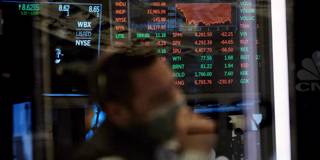Central banks become concerned, and usually start tightening policy, when higher inflation fuels higher inflation expectations among consumers. Current trends suggest that US policymakers have more to worry about than their European counterparts.
BRUSSELS – Consumer price inflation in the eurozone accelerated further in September to a 13-year high of 3.4% year on year, prompting a wave of alarmed headlines. Annual inflation in the United States stood at 5.3% in August. So, how concerned should European and US policymakers be about a possible prolonged inflationary surge?
In the eurozone at least, the current inflation headlines are to be expected. Experience suggests that an economic crisis leads first to a deflationary scare and then to an inflationary one. In the aftermath of the 2008 global financial crisis, deflationary worries at the bottom of the subsequent recession were followed by an uptick in inflation during the ensuing recovery.
A similar pattern has been evident in the COVID-19 crisis. For part of last year, prices in the eurozone were falling, and the talk was of the pandemic’s lingering deflationary effects.

BRUSSELS – Consumer price inflation in the eurozone accelerated further in September to a 13-year high of 3.4% year on year, prompting a wave of alarmed headlines. Annual inflation in the United States stood at 5.3% in August. So, how concerned should European and US policymakers be about a possible prolonged inflationary surge?
In the eurozone at least, the current inflation headlines are to be expected. Experience suggests that an economic crisis leads first to a deflationary scare and then to an inflationary one. In the aftermath of the 2008 global financial crisis, deflationary worries at the bottom of the subsequent recession were followed by an uptick in inflation during the ensuing recovery.
A similar pattern has been evident in the COVID-19 crisis. For part of last year, prices in the eurozone were falling, and the talk was of the pandemic’s lingering deflationary effects.